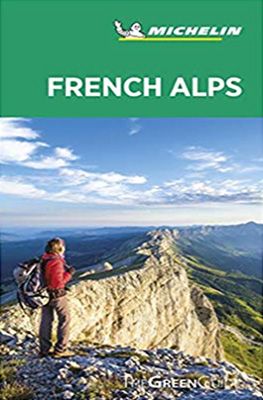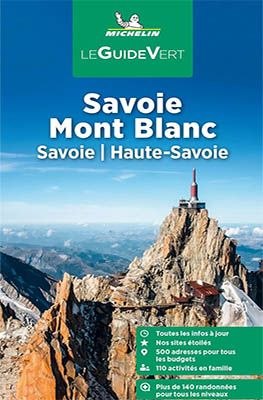The enchanting setting of Mont Blanc, Europe’s highest mountain, is known for its high peaks, glaciers and stunning views. Not surprisingly, the area attracts many hikers of all levels in summer. As avid hikers, we too have done many hikes in this region over the years. As a home base, we usually choose the valley of Chamonix. We find this an ideal spot to discover the unprecedentedly beautiful surroundings. The hiking possibilities there are endless. So, to get you started a bit, we’ve put together some suggestions in the blog. We then conclude with answers to practical questions about the hiking destination of Chamonix.
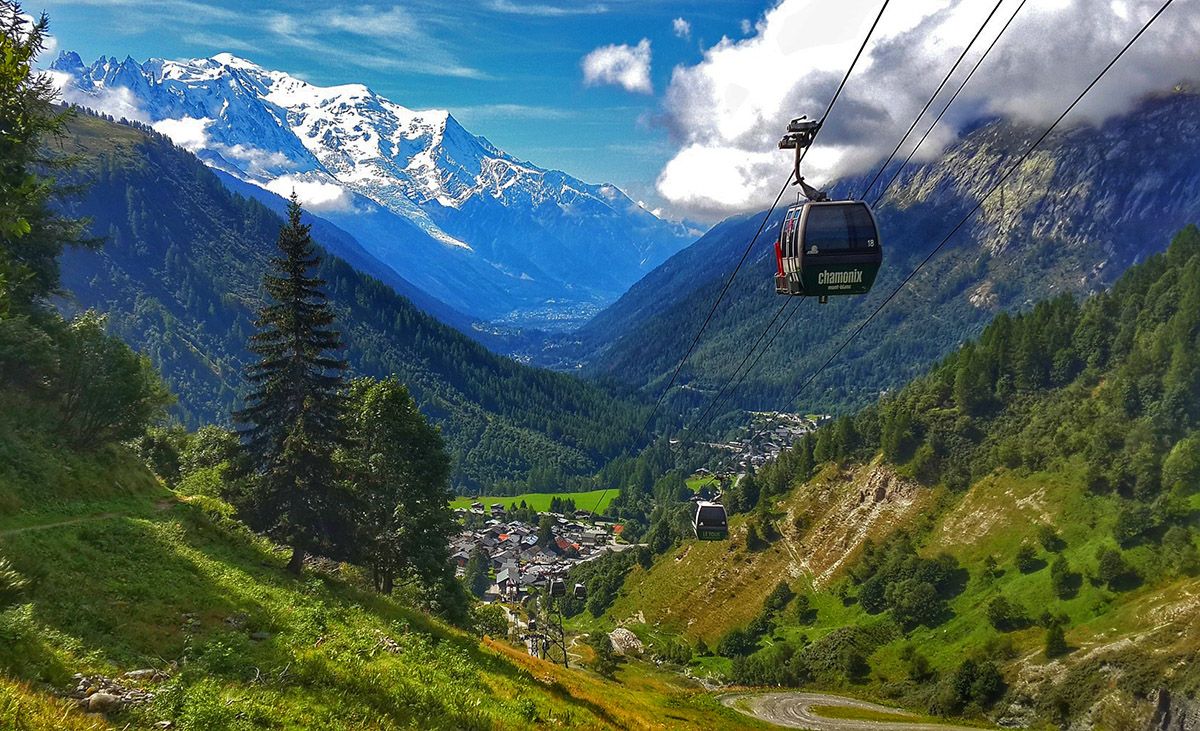
The most beautiful hikes near Chamonix
Below we mention some locations where you can do very nice hikes. On the official Chamonix site, they are described in more detail. You will also find the degree of difficulty there, as well as how long they take, what the starting and maximum altitude is, etc. We were very pleased with the Plan de l’Aiguille-Montenvers mentioned below, and with our hike to Lac Cornu and Mer de Glace. But if you like hiking, then almost all the hikes on the Chamonix site are utterly worthwhile.
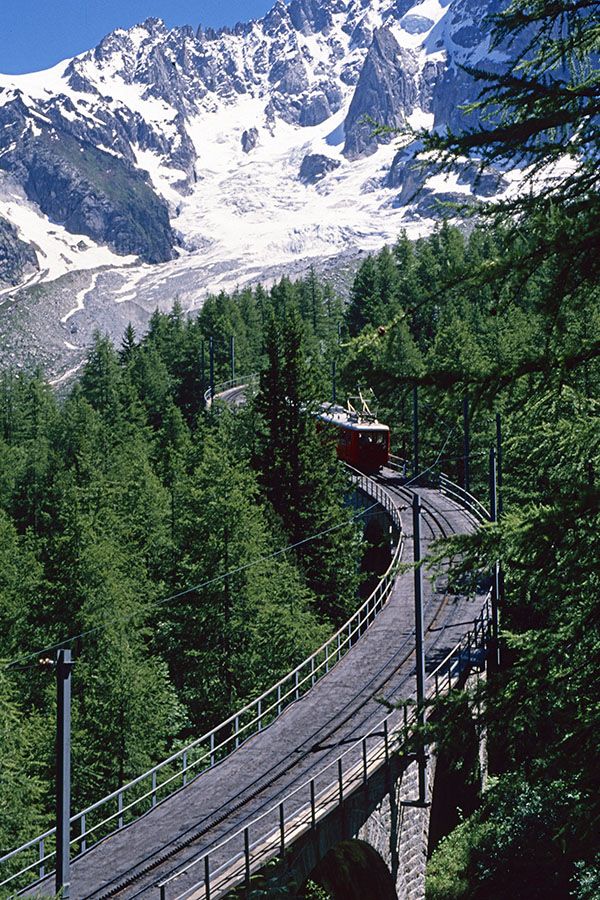
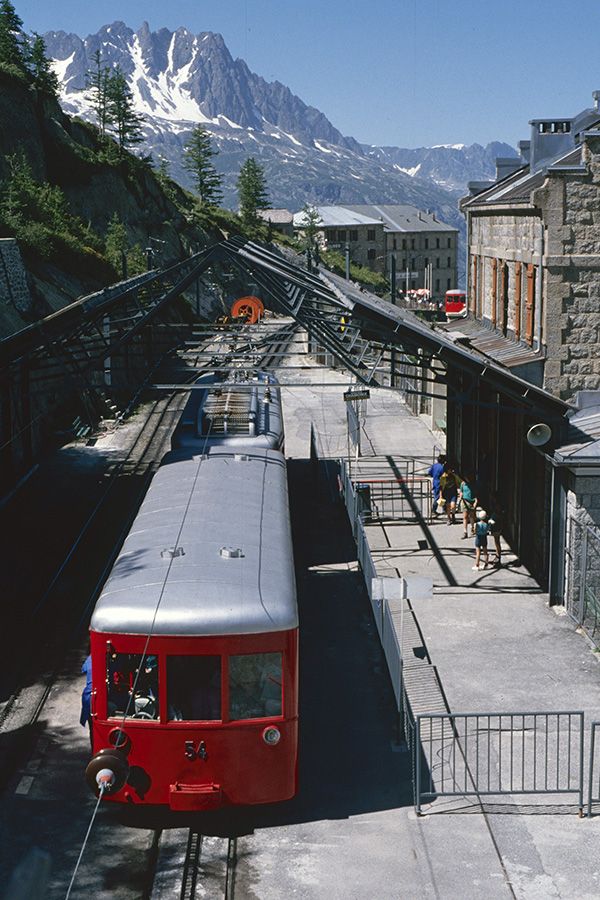
The many mountain lakes near Chamonix
You don’t have to be an experienced hiker to admire the beautiful lakes of the Mont Blanc area. They are situated at altitudes ranging between 2000 and 2500 metres. If you haven’t gotten used to the altitude (see also our blog about avoiding altitude sickness) then start these hikes before heading to higher altitudes like Aiguille du Midi.
One of the most beautiful mountain lake hikes is the one to Lac Blanc. This pristine alpine lake lies at an altitude of over 2,300 metres. There, you have breathtaking views of the Mont Blanc massif. For the hike to Lac Blanc, you need to be in good hiking condition, but the reward is well worth the effort. The lake’s turquoise waters and towering mountain peaks are guaranteed to delight. The trail is also known for its varied wildlife, including chamois and ibex.
Another stunning mountain lake hike takes you to Lac des Chéserys. This mountain lake which is often frozen is surrounded by granite rocks and alpine flowers. It is an enchanting place for a picnic and to enjoy its natural beauty. Near the lake is a chalet refuge where you can also go for some food or drinks.
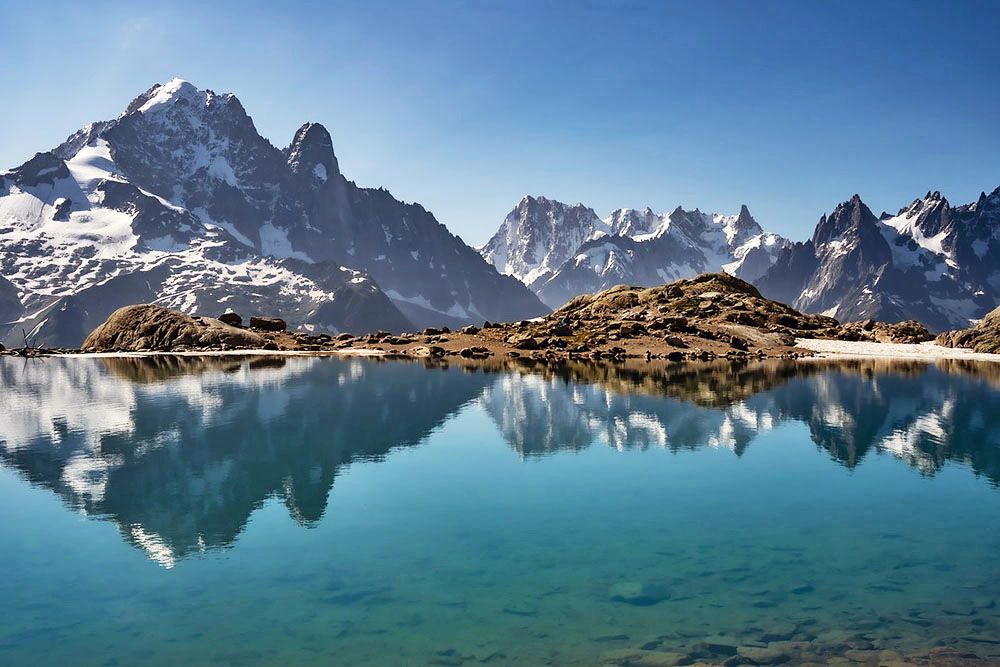
Aiguille du Midi
The Aiguille du Midi is a 3842-metre-high mountain top that since 1955 has been accessible by cable car. You get an amazing 360-degree view over the French, Swiss and Italian Alps. From the highest terrace you also have a perfect view of Mont Blanc.
From the intermediate cable car station, there are some nice hikes to do. So, you can go to Lac Bleu in about 15 minutes or do the two-and-a-half-hour hike in Plan de l’Aiguille-Montenvers.
You can also continue from the station with the cable car. With the Panoramic Mont Blanc cable car, you can go to the Pointe Helbronner (3462 metres) in Italy. During the ride you get a spectacular view of the Géant glacier.
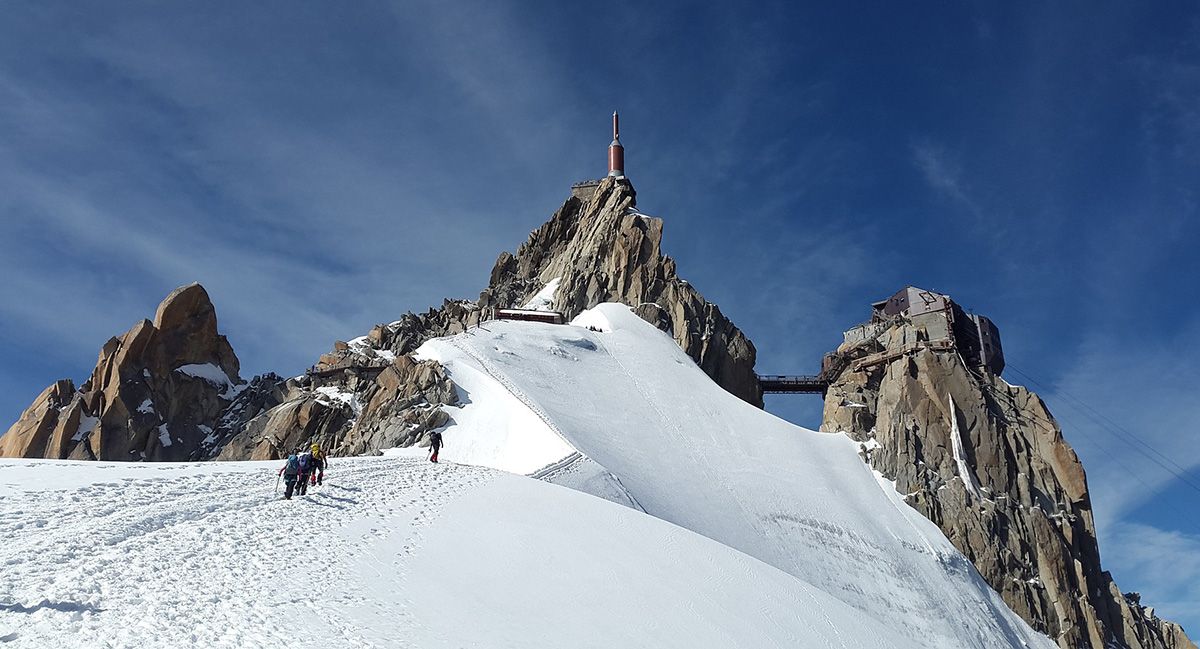
Montenvers – Mer de Glace glacier
From Montenvers, you then hike in 20 minutes to the Mer de Glace, France’s largest glacier. During the hike, you will gain more insight into the historical significance of the glacier and the impact of climate change. Information boards along the trail also show the glacier’s retreat over the years. The trail ends at a cave carved deep into the glacier each summer season. The surreal ice cave offers a glimpse into the heart of the glacier itself. The world inside is like a fairy tale thanks to the shimmering blue hues!
By the way, you can also take a walk on the glacier. We did this last summer accompanied by a guide. An absolutely unique experience! You can read more about it in our blog we wrote about the glacier hike.
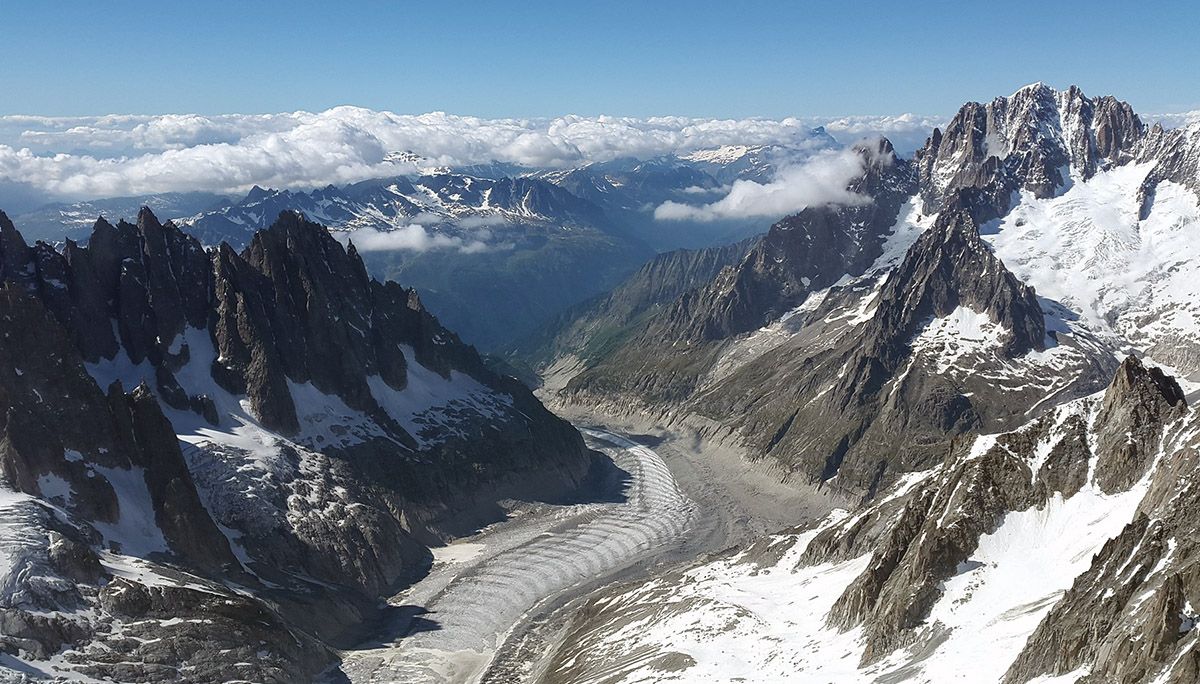
The Tour du Mont Blanc
The Tour du Mont Blanc (TMB) is one of the most famous long-distance hikes in Europe. The epic hike of a total of 170 kilometres passes through three countries: France, Italy and Switzerland. On the route, you have breathtaking views of Europe’s highest mountain. The great thing is that almost anyone with a reasonable walking condition can easily make this multi-day hike. But you have to take your time as it takes seven to 15 days.
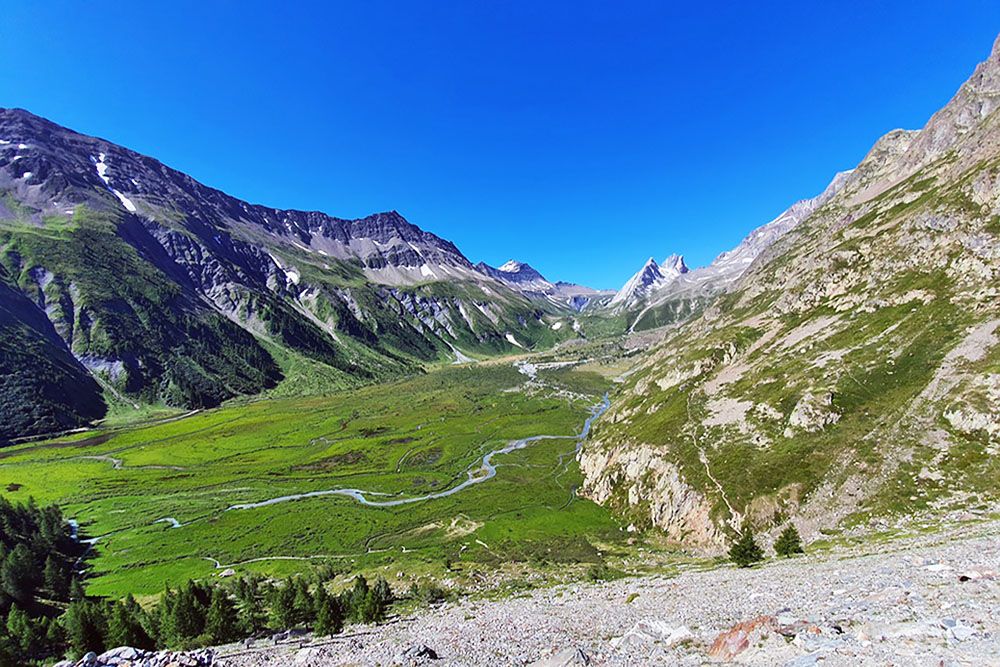
Answers to practical questions about hiking near Chamonix
Chamonix is southeast of Geneva and just north of Mont Blanc.
The fastest way to travel to Chamonix is by plane via Geneva airport. Here you then take a rental car to get to your final destination. Another comfortable option - and better for the environment - is by train. The fastest way is by TGV from Paris towards Annecy. From there, you can take local trains or buses to Chamonix. By your own car is also possible, of course. Count on about 650 kilometres from Paris to Chamonix.
The best season to hike near Chamonix is from June to end of October / beginning of November. July and August are not only the warmest but also the busiest months. Count on generally beautiful, blue skies and cool nights in both months. If you want to hike in August, book your accommodation well in advance.
Hiking in the mountains is quite different from hiking in our own country. A tip we want to give you if you have little or no experience hiking in the mountains is to hire a local guide. A guide has the added advantage of knowing the area like the back of his hand. Besides, in our experience, you will learn a lot of interesting things from a guide. For instance, about unique flora or which fauna to expect where.
Some nice towns and villages are in the valley where you can find plenty of accommodation outside of peak season. Think campsites, hotels, chalets, chalets with catering, even igloos.
- Chamonix
The charming and cosy Chamonix is the most famous place for tourists to stay in the valley. The city calls itself the “world capital of mountaineering”. What makes “Cham” so special is that Mont Blanc looms everywhere and there is so much more to experience besides climbing.Last summer, we stayed at the Refuge du Montenvers. This panoramic viewpoint is a 20-minute walk from Mer de Glace, France's largest glacier. We also previously spent the night in nearby Les Praz de Chamonix because you have the cable car to the Flégère there. From here, some great hiking trails lead to beautiful mountain lakes.
- Les Houches
Les Houches is a ski resort about six kilometres from Chamonix. It is located in a beautiful area of forests and rolling alpine meadows. You have a good view of the Aiguilles. Les Houches is also the starting and finishing point of the popular Tour du Mont Blanc, a seven- to ten-day hike around the foot of the Mont Blanc mountain range in France, Italy and Switzerland. Search for accommodation in Les Houches. - Servoz
Servoz is a mountain village in the heart of the Alps, particularly known to mountaineers. It lies at the foot of the beautiful Fiz mountains. You also have a beautiful view over Mont Blanc. Search for accommodation in Servoz.

